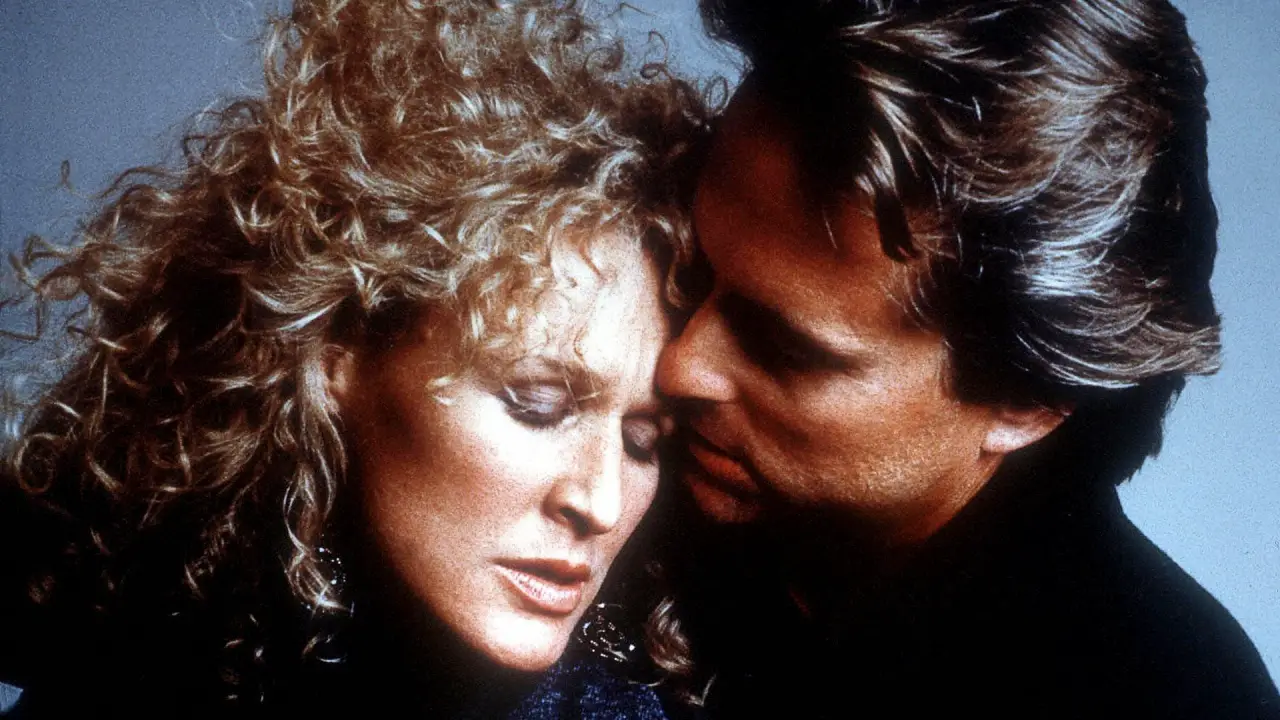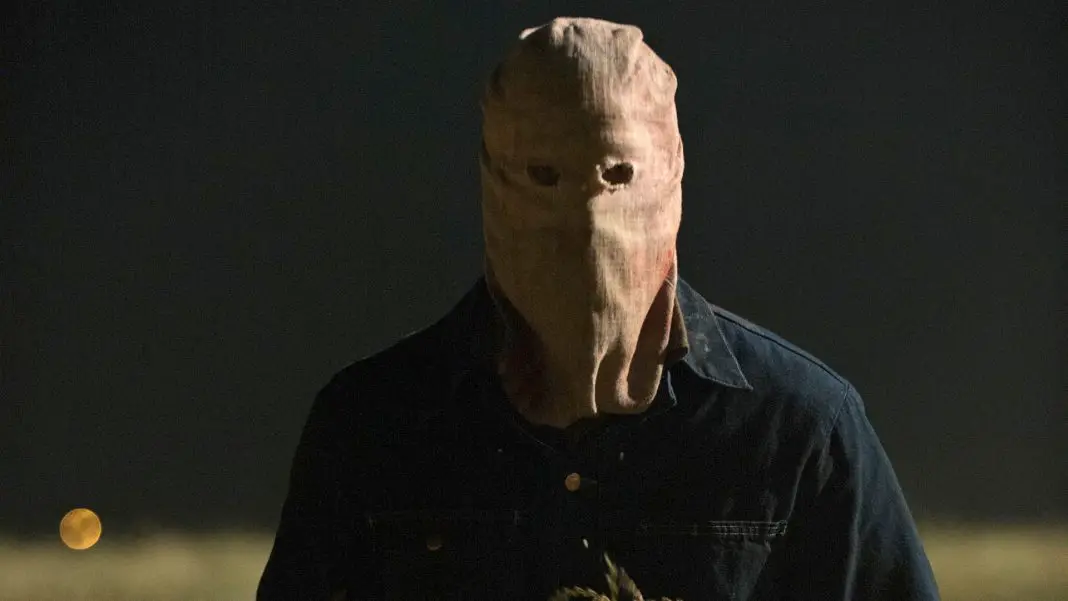‘We Kill for Love: The Lost World of the Erotic Thriller’ [Review]
![‘We Kill for Love: The Lost World of the Erotic Thriller’ [Review] ‘We Kill for Love: The Lost World of the Erotic Thriller’ [Review]](https://wickedhorror.com/wp-content/uploads/2023/09/we-kill-for-love-6.jpg)
We Kill for Love is a sprawling epic of a documentary covering the once prosperous, undeniably exciting world of direct-to-video erotic thrillers. Also known as soft-core, or erotica, this film genre was a booming business in the Reagan ’80s, through the ’90s, and even into the early aughts. As a huge fan of the genre, I, like many others, spent many hours watching these films on late night television. It is an understatement to say that Shannon Tweed was an…err… person of interest /; throughout my adolescence. We Kill for Love is a fascinating deep dive into the history of the erotic thriller genre, through interviews with many of the filmmakers, along with the actors, spliced in between a myriad of clips from every single erotic thriller you can think of, and then a thousand more…
We Kill for Love is directed by, produced by, and narrated by Anthony Penta. Even though this film is 163(!) minutes long, it is paced incredibly well for a documentary. The mixture of interviews with movie clips is well balanced and the rhythm is smooth. I found it to be incredibly educational throughout, finding myself trying to gobble up as much of the firsthand insight from the filmmakers and actors, writing down as many of the movie titles referenced as I possibly could, all while thoroughly enjoying the nostalgic and NSFW movie clips.
The structure of We Kill for Love is fantastic. By using a fictional archivist, as well as a narrator, the documentary itself somehow plays like a detective story, where the archivist is trying to uncover what had happened to the direct-to-video erotic thrillers of a long bygone era. The archivist doesn’t speak but scrummages through a library of VHS tapes while the narrator details the history of the genre through narration and interviews with erotic thriller enthusiasts, and those involved directly in the making of these movies. The production quality of this documentary is just as slick as some of the better erotic thrillers. I was enthralled throughout, and when the credits rolled, I was surprised at how quickly that 163(!) minutes went by…
![‘We Kill for Love: The Lost World of the Erotic Thriller’ [Review] ‘We Kill for Love: The Lost World of the Erotic Thriller’ [Review]](https://wickedhorror.com/wp-content/uploads/2023/09/we-kill-for-love-6.jpg)

We Kill for Love flips the lowbrow perception of erotic thrillers on its head, and really takes an academic approach to detailing the history of the genre, by providing a detailed chronological history of the erotic thriller genre, what inspired it, and how it fell out of public favor. Going as far back as the 1940s to connect the dots between the modern erotic thriller, and the noir thrillers of yesteryear. Those noir films keyed in on a fetishism aspect that undoubtedly inspired a slew of voyeuristic filmmakers to push further into our collective perverse nature. From Double Indemnity to Rear Window to Fatal Attraction to Body Chemistry 3, you might be hard pressed to find similarities between the German expressionist style of the noir films of the ’40s, the auteur-driven thrillers of the ’60s, the slick and star driven sexy thrillers of the ’80s, and glossy direct to video softcore erotica of the .90s. But We Kill for Love interconnects these movies through key thematic elements, and also contrasts the different eras regarding the perception of the femme fatale character, and how they were portrayed onscreen. Overall, the historical content in We Kill for Love is incredibly dense, and educational. Audiences will come away with a far better understanding of the history of the genre than they had going in, regardless of their level of familiarity…
Obviously, the actors and actresses involved in these films are magnetic personalities. I really enjoyed listening to their insight as to what it was like to work in this genre, and how much of a positive impact it had on their lives, in the moment at least. Sex on film, even simulated, is inherently taboo. So, it was refreshing to hear that for the most part, these performers not only felt comfortable, but also had a great time doing so, and were treated with respect. They all seemed to understand the assignment and when to ham it up, and not take the material so seriously. From interviews with legends of the genre like Monique Parent, Jodie Fisher, Andrew Stevens, and Amy Lindsay, amongst many others, the audience gets a handful of good content from the insight and perspective of these performers. I also really enjoyed the context provided by filmmakers like Fred Olen Ray and Jim Wynorski, who both had long and prosperous careers in the direct-to-video erotic thriller genre. Also, the inclusion of film scholars like Linda Ruth Williams, author of The Erotic Thriller in Contemporary Cinema, added interesting outside perspective and analysis.
One of my favorite behind-the-scenes segments in We Kill for Love was with James Dearden, the screenwriter of Fatal Attraction. Fatal Attraction was the catalyst for the sub-genre of direct-to-video erotic thrillers because of its cultural impact, and box office success (grossing $320 million worldwide). Dearden details the making of that film, as well as the unexpected audience reaction to the Glenn Close femme fatale character, all of which was fascinating. We Kill for Love is absolutely loaded with this firsthand perspective of what it was like to work in this industry…

The direct-to-video erotic thriller sub-genre differs slightly from what most people would associate the erotic thriller genre with, including the mainstream classics like Body Double, from the great Brian De Palma, who I would consider the godfather of this sub-genre, David Lynch’s Mulholland Dr., Stanley Kubrick’s Eyes Wide Shut and of course, Paul Verhoeven’s Basic Instinct. The direct-to-video erotica was mostly made by independent studios and churned out at a factory level pace. Utilizing the same actors and same directors, who even went as far as using aliases to avoid confusion with the volume of work that was being completed. These independent films would be distributed across the world with the primarily in video rental stores, amongst the mainstream thrillers, with seemingly interchangeable movie titles like Naked Obsession, Intimate Nights and Dangerous Attraction. Distinguishing between movies with titles like this was difficult for not only audiences, but also the actors and filmmakers themselves!
This market garnered a massive fanbase of people who wanted to stray from the more uptight morals of Reagan’s ’80s, which seeped into popular culture of the time. The set pieces for these films were consistently aesthetically pleasing fantasy playgrounds, utilizing candles galore, luxurious homes, and flowy curtains. Danger, romance and seduction being the most important aspects to hammer home, the rest is just window dressing. Business was booming, profitable for everyone involved, but the dissolution of the home video market, caused by over-saturation, as well as bigger studios shifting home video strategy to compete with the independent studios led to the downfall of this business model, in turn leading to the demise of this sub-genre as a whole. We Kill for Love chronicles the factors that led to this demise at length, and exceptionally so…
The catalog of direct-to-video erotica, mainstream erotic thrillers and sheer amount of movie clips in We Kill for Love is overwhelming. If you blink, you miss a clip from a classic film. My only complaint is that I would have personally loved for Shannon Tweed to be part of the panel of interviews, but there was still more than enough insight across the board that her absence wasn’t as sorely missed.
My personal recommendations for strictly direct-to-video erotic thrillers would be Damien’s Seed, In the Cold of the Night, Scorned, Body Chemistry 3, Possessed by the Night, Virtual Desire, Animal Instincts and Sins of Desire. Familiar faces are scattered across the landscape of this genre, and although the sex scenes can be considered borderline pornography, the performances are so much fun, with one-liners galore, and the stories run the full gambit of thrilling and comical, while also being set in idyllic worlds that are undeniably fun to escape to. These direct-to-video erotic thrillers are the full package… worthwhile bang for your buck… and sinfully addictive. You can’t go wrong with checking out anything logged in We Kill for Love.
Overall, my biggest takeaway from We Kill for Love is the nostalgia and deep appreciation from the makers of this documentary, those who worked in the industry, and those who cover this genre from the outside have for this era of films. The love they all have for the subject makes We Kill for Love a very charming and enjoyable experience, and I highly recommend it to anyone who wants to learn about an impactful moment in film history, while also treating yourself to some NSFW movie clips… The film is now available on demand.
Wicked Horror Rating: 8/10
Post Views:
1





![‘Nightwatch’ Is A Master Class in Tension [Watch] ‘Nightwatch’ Is A Master Class in Tension [Watch]](https://www.dreadcentral.com/wp-content/uploads/2024/12/Night-Watch-I.jpg)